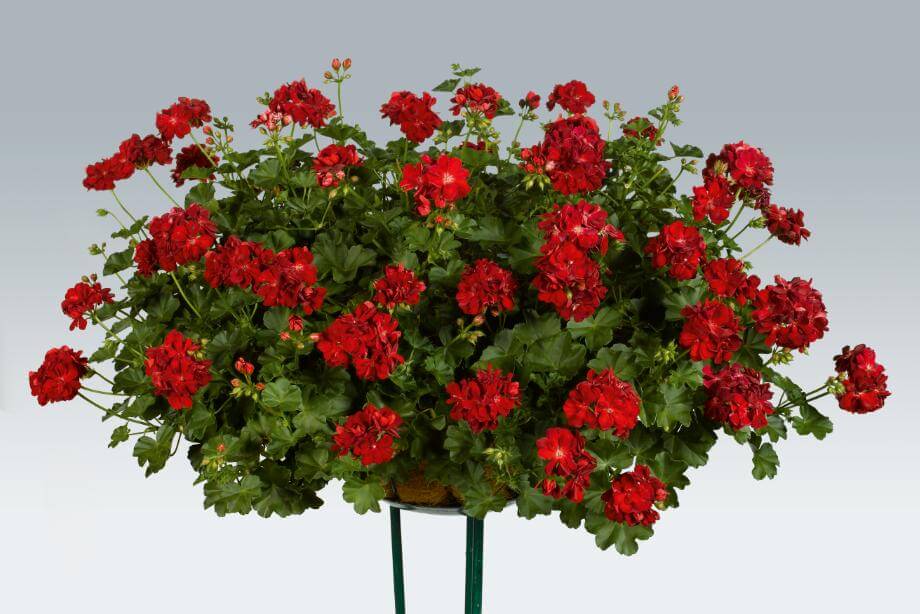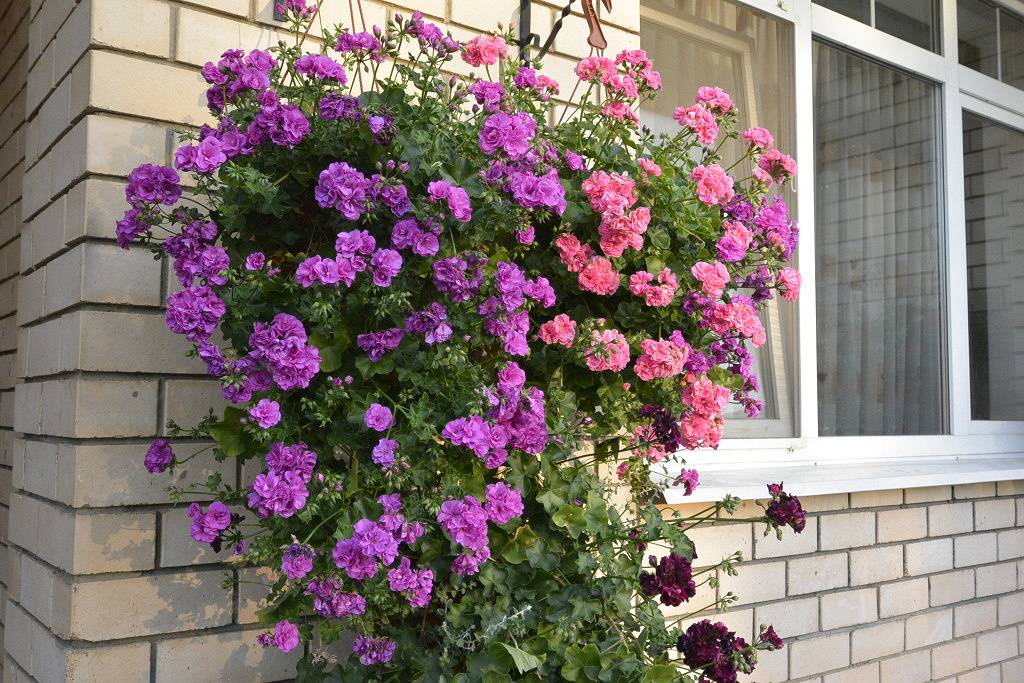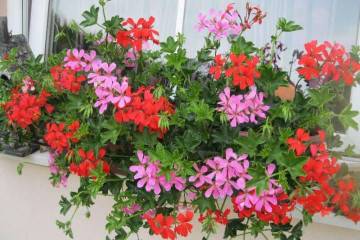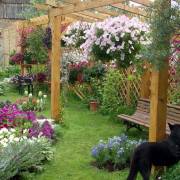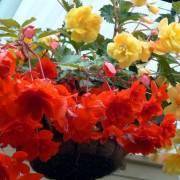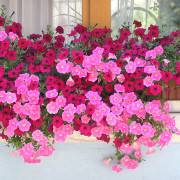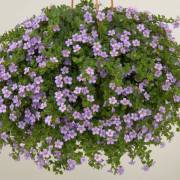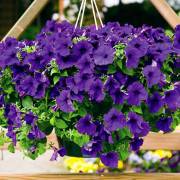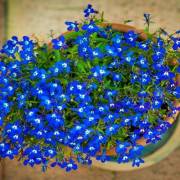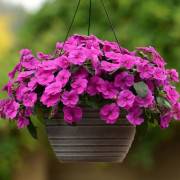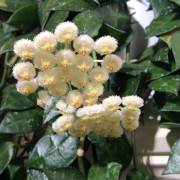Care for ampelous geranium or ivy pelargonium: diseases and pests
Content:
More than 400 varieties of geraniums have been bred by breeders. Pelargonium flowers come in different shapes and colors. Below is information about growing a crop, diseases and pests, as well as caring for a geranium flower at home.
Care of geranium or ivy pelargonium
Geranium is one of the unpretentious crops. But for a beautiful flowering, she still needs to be provided with the conditions to which she is accustomed, being in nature.
What is the Difference Between Pelargonium and Geranium
Pelargonium is a flowering plant that can develop only in warm conditions. She has lush, showy inflorescences of various colors and shapes. There is even a tulip pelargonium.
Garden geranium is a perennial plant. She is not afraid of frost, she does not need to be dug out for the winter. The inflorescences of the culture do not have bright colors and lush shapes.
How to care for geraniums at home: tips for beginners
Experts explain how to care for geraniums. In order for the culture to quickly grow green mass and bloom profusely, the following conditions must be observed:
- put a flower pot in a well-lit place with shade on a hot afternoon;
- water after the top layer of the earth has dried. Excess fluid after 10-15 minutes. pour the irrigation field from the pallet;
- periodically ventilate the room;
- feed geraniums in the spring-summer period 1 time in 2 weeks;
- remove dried flowers;
- cut off extended shoots. At the same time, dormant lateral buds begin to wake up, the plant begins to bush.
What conditions are needed for geraniums, depending on the season
In spring and summer, the culture abundantly grows green mass and blooms. Therefore, during this period, it needs to be watered abundantly, fed. For the summer, flower pots can be taken out into the fresh air and even transplanted into open ground.
In the fall, feeding is reduced to 1 time per month.
In winter, the life processes of plants slow down. Therefore, watering geraniums is reduced, feeding is stopped.
Choosing a location for geraniums
Keep the culture in a well-lit place. If the bushes are grown on a windowsill, then on a hot afternoon they should be covered from the scorching rays of the sun. In the open field, geranium easily tolerates heat, since the seedlings are hardened before planting.
In poor lighting, the shoots will begin to stretch, the leaves will shrink. Flowering under such conditions may not occur at all. Therefore, if there is a lack of light in the room, phytolamps are used.
Temperature regime for culture
Geranium can withstand a wide range of temperatures. It develops well at room temperature. When grown in a flowerbed, it will safely endure the summer heat.When kept in a cool room in winter, it will look no less decorative.
Air humidity for the plant
Pelargonium does not need too humid air. Frequent spraying of the bushes is not required. It is enough to arrange a shower once a month in the summer, washing off the dust from the leaves. At the same time, the earth is covered with a film so that excess moisture does not get there.
Diseases of ampelous pelargonium
The culture is affected by disease due to improper care. The main reason for the appearance of pathogenic microorganisms is excessive soil moisture. The main diseases to which ampelous pelargonium is exposed are as follows:
- blackleg. The plant starts to rot from the base. It can be saved only by cutting off and rooting the top;
- rust. Rusty yellow spots appear on the leaf plates. Soon the leaves fall off. You can save geraniums by spraying with fungicides at the first signs of the disease;
- powdery mildew. The leaves become as if dusted with flour. Treatment is with antifungal drugs;
- dropsy. Happens due to unregulated watering. If the soil in the pot is too dry, and then the plant is watered abundantly, bubbles of water appear on the leaves. When they burst, dark scars form.
In addition to fungal diseases, the culture can be affected by the virus. It stops growing, ring-shaped spots appear. If the disease of Pelargonium ivy can be cured, then viruses are incurable.
Ivy Pelargonium pests
Pests usually affect plants with weakened immune systems. Common cultural misfortunes:
- aphid. Sucks juices from leaves. The plant dries out gradually. If there are few insects, they can be washed off under the pressure of water or collected by hand;
- whitefly. The female lays many eggs on the leaves, from which midges with white wings quickly emerge. To get rid of insects, the affected leaves are plucked, the plant is sprayed with a drug called aktara;
- spider mite. A thin web is a sign of the appearance of a pest. They get rid of the tick by irrigating the bushes with actellik or phytoverm.
Why ampelous geranium does not bloom
With proper care, the buds of the culture bloom from spring to late autumn. Sometimes geraniums can bloom even in winter. If the plants do not form buds, then the gardener is making some mistakes.
The most common mistakes when growing geraniums
Why ampelous geranium does not bloom, experts can explain. They note the following mistakes made by novice growers:
- too frequent or infrequent watering. As a result, geranium weakens, does not form an ovary, it can be struck by diseases and pests;
- a small bush is planted in a large pot. Until the root system wraps around the container, flowering will not occur. Therefore, it is necessary to increase the size of the container gradually when transplanting;
- lack of nutrients in the soil. Monthly feeding will help the plants to form flower ovaries;
- the bushes are in a too dark room. For abundant and long-lasting flowering, they need to be placed in a well-lit place.
Correct and timely feeding and fertilization
Geranium responds well to feeding. It is brought in in spring and summer every 2 weeks. In the autumn, it is enough to water with a complex mineral fertilizer once a month.In winter, especially when kept in a cool apartment, watering is reduced, feeding is not done.
Pelargonium is an unpretentious houseplant. It not only blooms beautifully, but also cleans the air of toxins. Geranium does not require special care. It needs to be watered as needed, periodically fed, and bushes should be formed. And then the grower will be able to admire the beautiful flowering of geraniums for almost the whole year.
